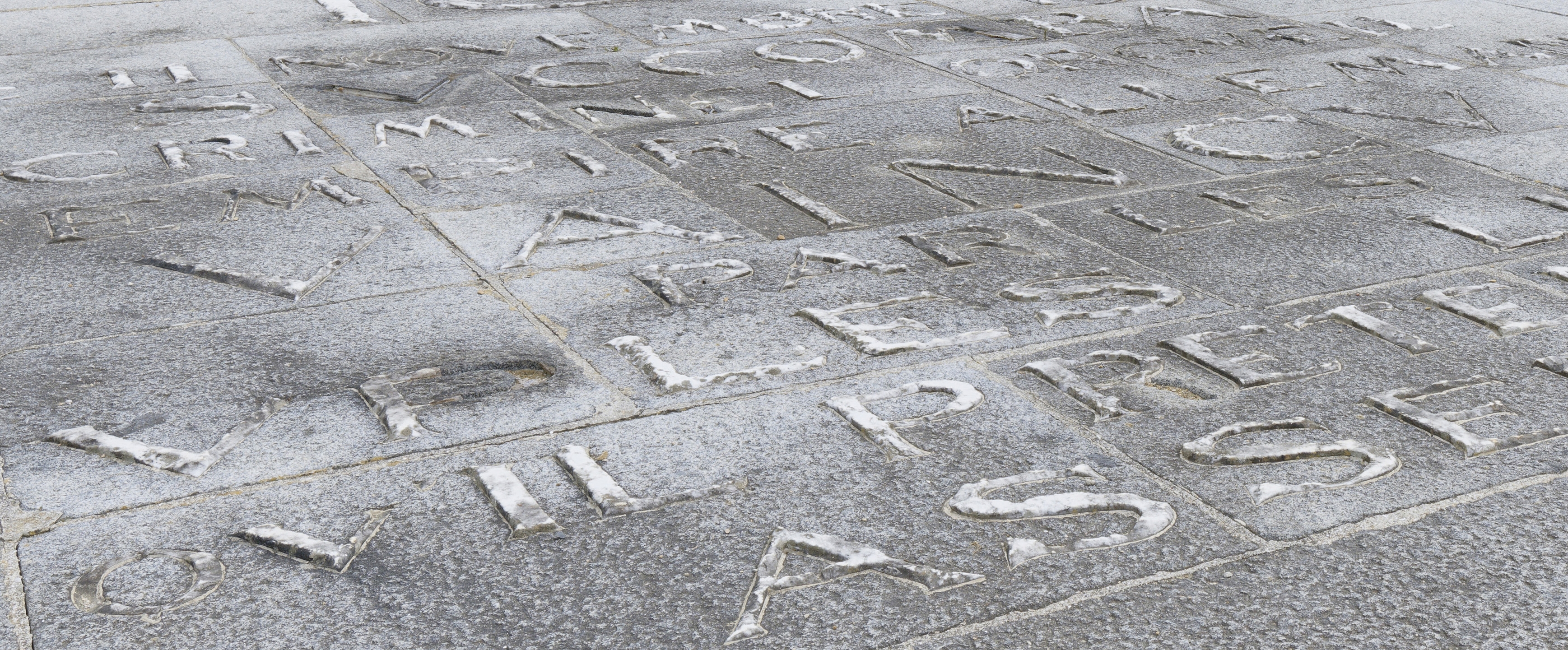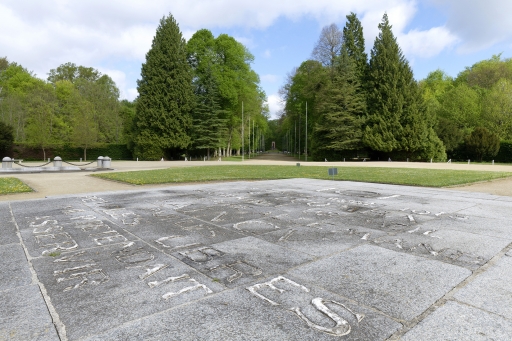The city of Compiègne is making an international crowdfunding appeal to support the renovation of a granite memorial commemorating the site where the Armistice was signed in November 1918.
After decades of exposure to the weather, La Dalle Sacrée, or Sacred Stone, is suffering clear signs of wear and tear.
The refurbishment project aims to restore the monument’s faded white lettering, and conserve its overall fabric.
Situated in the forest where a German delegation accepted the Allied ceasefire demands ending the First World War, the memorial bears the inscription: “Here, on 11 November 1918, succumbed the criminal pride of the German empire vanquished by the free peoples it tried to enslave.”
More than 80 per cent of the restoration crowdfunding target has already been raised through the City of Compiègne’s appeal, which ends on July 15.
 The worn inscription on La Dalle Sacrée – work is needed to maintain its legibility (Photo © Mairie de Compiègne)
The worn inscription on La Dalle Sacrée – work is needed to maintain its legibility (Photo © Mairie de Compiègne)
In November 1918, the Allied Supreme Commander, Marshal Ferdinand Foch, delivered the armistice terms to Germany’s representatives in his train on a secluded railway line in the Forest of Compiègne.
The clearing at Rethondes, or Glade of the Armistice, was laid out as a French national war memorial in the early 1920s, with La Dalle Sacrée at the centre. The granite used was the same as that for the Tomb of the Unknown Warrior at the Arc de Triomphe in Paris.
In June 1940, Adolf Hitler humiliated France by summoning its military commanders to sign the Second World War ceasefire with Nazi Germany in Marshal Foch’s Wagon-Lits carriage.
Major work was last carried out on La Dalle Sacrée 70 years ago when the Rethondes memorial site was restored following destruction during the German occupation.
See also Compiègne – Ville du Centenaire for the programme of First World War commemorative events taking place in the run-up to November. Le Musée de l’Armistice 1914-18 at Rethondes has exhibits devoted to both world wars, including a replica of Marshal Foch’s railway carriage. The original was destroyed in Germany in the closing days of the Second World War.
Source: Mairie de Compiègne
© Images courtesy of Mairie de Compiègne
Posted by: CN Editorial Team
